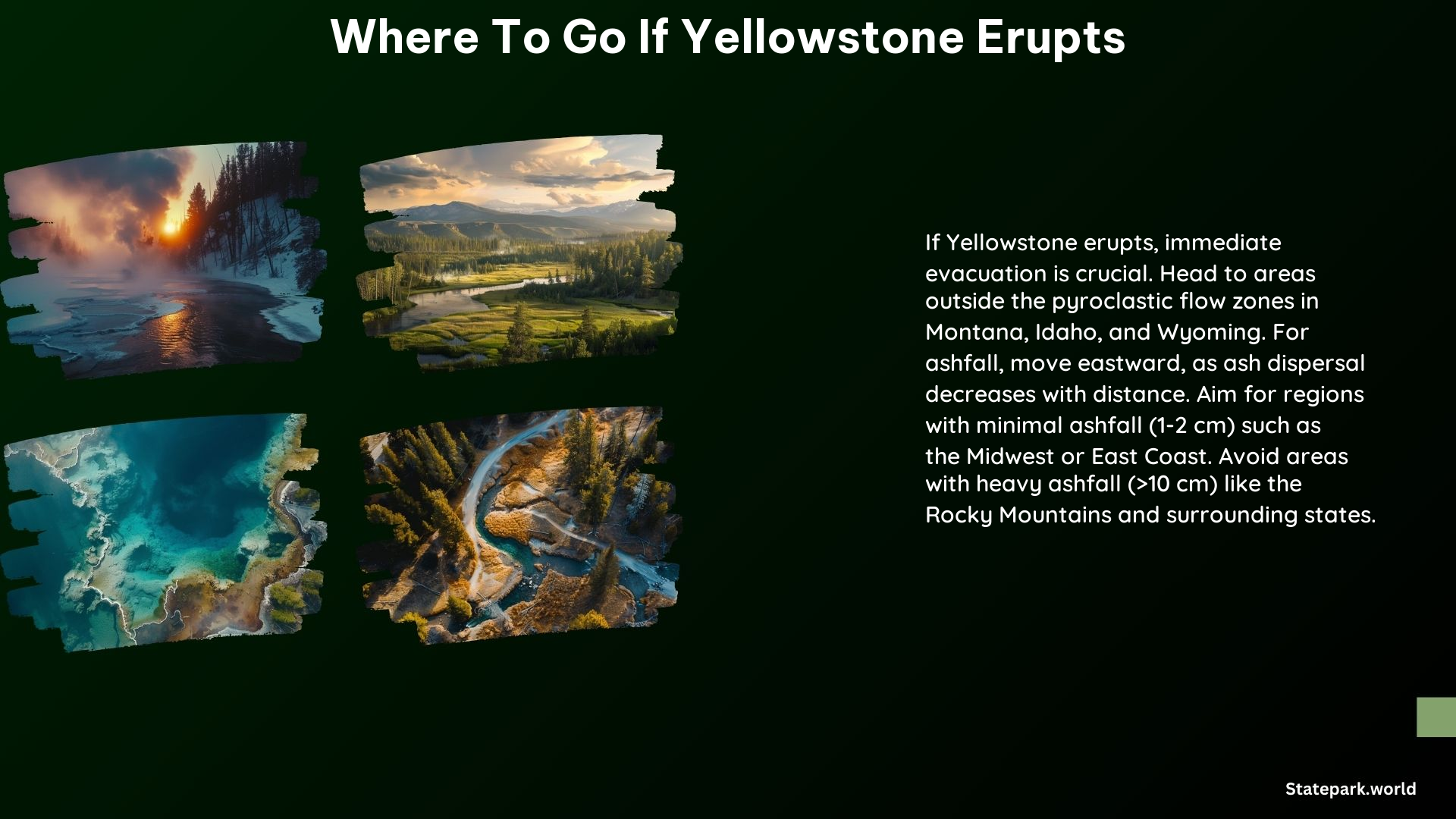If the Yellowstone supervolcano were to erupt, the immediate and long-term effects would be catastrophic, with pyroclastic flows, ash dispersion, and toxic gases affecting the surrounding regions. The eruption could also lead to global cooling, agricultural disruption, and infrastructure damage. As a national park touring enthusiast, it’s crucial to understand the potential impact and plan accordingly.
Regions to Avoid
Immediate Vicinity of Yellowstone
The areas surrounding Yellowstone National Park, including parts of Montana, Idaho, and Wyoming, would be the most severely affected by the eruption. Pyroclastic flows and heavy ash fall would make these regions uninhabitable and impassable.
Downwind Ash Dispersion
The ash plume from a Yellowstone eruption could spread across vast regions of the United States, potentially affecting major cities and agricultural areas. Avoid traveling to areas that are likely to be impacted by the ash fall.
Safer Destinations

Regions Upwind of Yellowstone
Areas located upwind of Yellowstone, such as the Pacific Northwest or the Northeastern United States, may be less affected by the ash dispersion and could be safer destinations for national park touring.
Coastal Regions
Coastal regions, particularly on the West Coast, may be less impacted by the eruption’s effects, as the ash plume is likely to be carried inland. These areas could provide a refuge for national park enthusiasts.
International Destinations
If the Yellowstone eruption has global implications, consider international destinations for your national park touring. Countries outside the United States may be less affected by the eruption’s consequences.
Preparing for Transportation Disruptions
Monitor Volcanic Activity
Stay informed about Yellowstone’s volcanic activity through official channels, such as the U.S. Geological Survey (USGS), to anticipate potential eruptions and plan your travel accordingly.
Develop an Emergency Plan
Create a personal emergency plan that includes evacuation routes and emergency supplies in case of an eruption. This will help you respond quickly and effectively to any disruptions.
Explore Alternative Transportation
Consider alternative modes of transportation, such as trains or buses, in case air travel is disrupted due to the ash fall or other eruption-related issues.
Key Considerations
- The last major eruption of Yellowstone occurred approximately 640,000 years ago, and the supervolcano has experienced three major eruptions in the past 2.1 million years, with an average interval of around 700,000 years between eruptions.
- A Yellowstone super-eruption could expel more than 1,000 cubic km of ash and debris into the atmosphere, which could have far-reaching consequences for global climate and transportation.
- Stay informed, plan ahead, and be prepared to adjust your national park touring plans if a Yellowstone eruption occurs.
References
- “What Happens if the Yellowstone Volcano Erupts?” by YouTube Channel
- “What would happen if the Yellowstone supervolcano actually erupted?” by Vox
- “What would happen if a ‘supervolcano’ eruption occurred again at Yellowstone?” by USGS
- “How far would ash travel if Yellowstone had a large explosive eruption?” by USGS
